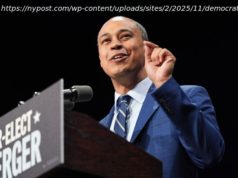The Senate bill would allow insurers to sell non-Obamacare plans and turn exchanges into high-risk pools for the old and sick. That might be good.
Details of Senate Majority Leader Mitch McConnell’s revised health-care bill were unveiled yesterday, and they include everything from expanded health savings accounts to more funding for the treatment of opioid addiction to relaxed rules for Medicaid—a little something for all the warring GOP factions in the Senate.
But the most important amendment might be the proposal from Sen. Ted Cruz to allow insurance companies to sell cheaper, deregulated plans outside the Obamacare exchanges so long as they also sell Obamacare-compliant plans through an exchange. These non-compliant plans wouldn’ t have to cover the “essential health benefits” that Obamacare plans on the exchanges are required to cover, but they’ d be a lot cheaper.
For consumers, that would mean if you didn’ t want to buy an insurance plan that covered Obamacare-mandated mental health and substance abuse treatment, or maternity care, or pediatric oral and dental care, then you wouldn’ t have to. You could buy a plan that covered almost nothing but a visit to a hospital emergency room and an annual physical, if you wanted to. Those plans used to be common before Obamacare, and they were actually attractive to younger people without a lot of health problems because the premiums were cheap. Under Cruz’s proposal, plans like that would come back to the individual market.
That might not sound like much, but it has the potential to drive down premiums and re-shape individual health insurance markets across the country, which right now are collapsing under the weight of Obamacare regulations and rising premiums .
By effectively creating new individual insurance markets for cheaper, non-Obamacare plans, while also providing more than $180 billion for state-based initiatives to drive down premiums, this new version of the Senate health-care bill would in effect create federally funded high-risk pools for older and sicker Americans. That’s a long way from a “market-based” health-care system, but it would definitely be better than the Obamacare status quo—and it would certainly mean more middle-class Americans could afford to buy coverage.
But let’s back up. In health insurance parlance, a “high-risk pool” is an insurance mechanism to cover people with preexisting conditions, who tend to have higher medical costs. In pre-Obamacare days, high-risk pools were a partial solution to the problem of preexisting conditions, which rendered some people uninsurable in the traditional sense (because you can’ t insure against something that’s already happened) . By segregating those with preexisting conditions, insurance companies could protect healthier customers from their high medical costs, which would have driven up premiums for everybody. This of course is what’s happening under Obamacare.
Before Obamacare, states had significant discretion over their individual health insurance markets and many created high-risk pools for people whom insurers turned away. Most of the people insured by these pools received subsidies, paid for by premium taxes imposed on insurance companies. Of course, since different states ran their high-risk pools differently, they had varying degrees of success, usually pegged to how much the state subsidized the pool (Maryland’s high-risk pool provided $120 million in subsidies, California’s only $40 million) . But at least the pools provided a way for people with expensive or chronic health problems to have some form of health coverage.
All those high-risk pools disappeared with Obamacare. Since insurance companies were barred from turning anyone away because of a preexisting health problem, there was seemingly no need for high-risk pools anymore, and states wound them down.
That brings us to the present day. Under Obamacare, all those people with preexisting conditions, who previously had been in high-risk pools, were lumped into individual insurance markets with everybody else, which of course caused premiums to rise. As premiums rose, younger and healthier people, who didn’ t think coverage was an absolute necessity, simply didn’ t buy insurance. That meant the people left in the individual market were on average older, sicker, and more costly to insure. Hence the skyrocketing premiums under Obamacare.
It’s also worth noting that Obamacare itself included something akin to a temporary federal high-risk pool, called the Preexisting Condition Insurance Plan. It took effect four months after President Obama signed the ACA into law in 2010, and was designed to cover people insurers had rejected while the exchanges were being set up, which took four years. But it was only funded with a one-time appropriation of $5 billion, and enrollment was capped at 115,000 before the exchanges opened because the program was running out of money.
If Senate Republicans manage to pass their revised bill—and it’s a big “if”—we’ ll probably see a significant number of younger and healthier Americans drop their exchange coverage and buy cheaper, bare-bones plans outside the exchanges. That means premiums on the exchanges will rise, unless they’ re offset by all those billions of dollars set aside to help states drive down premiums and out-of-pocket costs.
The whole thing would function, if it functions at all, like a series of state-based, federally funded high-risk-pools. Those with preexisting conditions will be on the heavily subsidized exchanges, and those with lower health-care costs would buy non-Obamacare plans outside the exchanges. It’s likely, too, that more people would actually purchase individual market coverage, since the bill would allow tax credits to apply to more types of coverage, like catastrophic and lower-premium plans, and allow people with health savings accounts to use pre-tax dollars to help pay premiums.
This would almost certainly be an improvement over Obamacare because it would allow room for an actual insurance market, for Americans who are actually insurable. For those who aren’ t, there would be the exchanges, which would function like high-risk pools. One of the great follies of Obamacare is that it didn’ t allow insurance to function as insurance anymore. If you force insurance companies to cover things that have already happened, that’s not insurance; it’s a junky, yet expensive, version of health care as a public utility.
Start
United States
USA — Financial Senate Bill Would Cover Pre-Existing Conditions, Drive Down Premiums






